Sherpani Col Pass Trek
Toughest trek in the eastern Himalaya
 Destination
Destination  Difficulty
Difficulty  Max. Altitude
Max. Altitude  Activity
Activity  Start/End Point
Start/End Point  Best Season
Best Season  Group Size
Group Size  Transportation
Transportation  Activity Per Day
Activity Per Day The Sherpani Col Pass Trek is an exhilarating and challenging journey that takes you through Nepal’s rugged and breathtaking Makalu and Everest Region landscapes. This 22-day hike is the ideal combination of scenic vistas, local culture, and adrenaline-pumping altitudes.
After flying from Kathmandu to Tumlingtar, you will take a jeep to Chichila to start the journey. From there, the trail steadily ascends, passing through quaint towns, thick woods, and open meadows in the Himalayas. You will hike across suspension bridges and over mountain passes, all while learning about the Sherpa people and their fascinating history.
As the trek progresses, you’ll reach higher elevations, encountering the majestic peaks of Makalu and Everest. The trails from Tashi Gaon to Khongma Danda offer awe-inspiring views of snow-capped mountains and deep valleys. Along the way, you’ll have acclimatization days to adjust to the altitude and soak in the incredible surroundings.
The highlight of the trek is crossing the technical Sherpani Col pass, a challenging section that requires physical endurance and mountaineering skills. You’ll face steep ascents, icy slopes, and demanding terrains, reaching Baruntse Camp and Honku Basin.
From there, the journey continues to Amu Lapcha Base Camp, where you’ll have another acclimatization day before making your way to Chukung and Tengboche. These stages allow you to experience the unique blend of cultural richness and mountain grandeur, with visits to monasteries and encounter with the friendly Sherpa community.
The trek concludes with a descent to Lukla and a scenic flight back to Kathmandu, where you can reflect on the incredible challenges and achievements of the Sherpani Col Pass Trek.
Throughout the journey, you’ll be surrounded by breathtaking vistas of towering peaks, glaciers, and pristine wilderness. The trek demands physical fitness, determination, and a spirit of adventure. This route is ideal for seasoned hikers looking for an off-the-beaten-path experience in the Himalayas.
The Sherpani Col Pass Trek promises a once-in-a-lifetime experience, providing a profound connection with nature, cultural immersion, and a deep appreciation for the majestic Himalayas. It is a testament to the wonders and challenges awaiting brave adventurers in the heart of Nepal’s mountainous landscapes.
The green hills and the cultural spirit of Kathmandu are waiting for your arrival. If you are arriving in Nepal on a flight, our trek representative will be ready to pick you up at the airport terminal, holding a placard with your name. After exchanging a welcome greeting, we will drive you to the hotel.
Arriving by road, our representative will pick you up at a designated stop in Kathmandu.
Since no activities are planned for today, you can enjoy the rest and store your energy for the upcoming adventure. Or, you can stroll around the streets close to the hotel. We will give an Everest Base Camp Trek briefing session in the evening.
Accommodation: The Everest Hotel or similar
Note: We need your flight/travel details for the airport/road transfer service. Please provide them 7 days before the tour departure date.Fly from Kathmandu to Tumlingtar and then embark on a scenic 4-hour drive to Chichila (1980 m / 6496 ft). The journey introduces you to the beautiful landscapes of the region. Settle into your accommodations in Chichila and prepare for the adventure ahead.
Accommodation: Tented Camp
Meals: Breakfast, Lunch, and Dinner
Begin your trek from Chichila as you make your way to Num (1040 m / 3412 ft). The 6-hour hike takes you through lush forests, charming villages, and picturesque trails. Take in the breathtaking scenery and relax in the calm atmosphere. Reach Num and rest for the night.
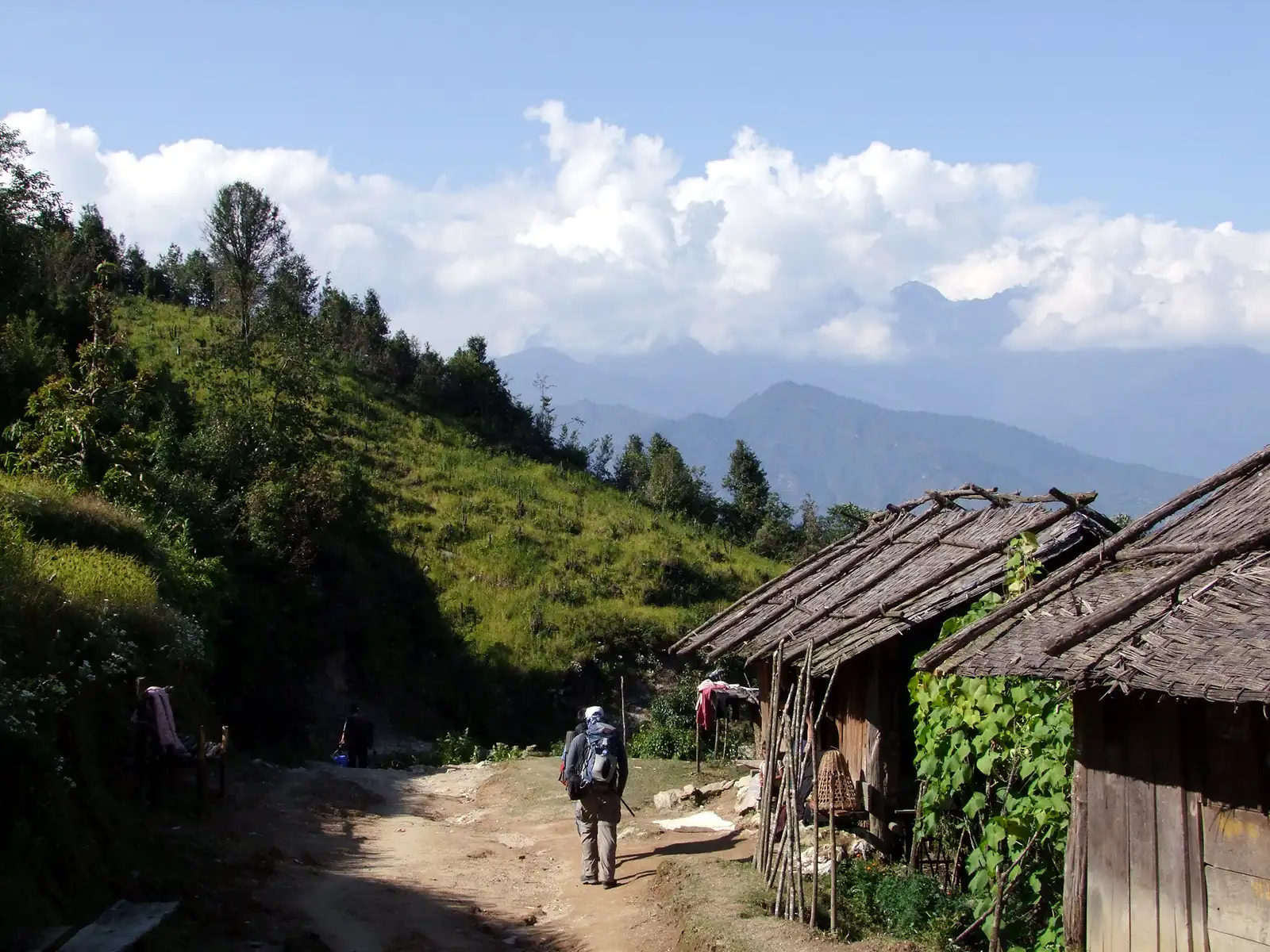
Accommodation: Tented Camp
Meals: Breakfast, Lunch, and Dinner
Today’s trek takes you from Num to Seduwa (1500 m / 4921 ft). The 7-hour hike unveils stunning vistas, diverse flora and fauna, and the region’s rich cultural heritage. Walk across suspension bridges and through lush woodlands while experiencing the friendly locals. Arrive at Seduwa and settle into your accommodations for a well-deserved rest.
Accommodation: Tented Camp
Meals: Breakfast, Lunch, and Dinner
Embark on a 6-hour trek from Seduwa to Tashi Gaon (2100 m / 6889 ft). The route leads to breathtaking vistas of the Makalu area and its snow-capped peaks. Immerse yourself in the serenity of the Himalayas as you pass through quaint settlements and interact with friendly locals. Arrive in Tashi Gaon and take in the awe-inspiring mountain vistas before retiring for the night.
Accommodation: Tented Camp
Meals: Breakfast, Lunch, and Dinner
Today’s trek from Tashi Gaon to Khongma Danda (3500 m / 11482 ft) spans approximately 7 hours. As you make your way up the route, you’ll get stunning panoramas of towering peaks and deep valleys. Experience the changing landscapes as you make your way through dense forests and alpine meadows. Reach Khongma Danda and relish the tranquility of the high-altitude wilderness.
Accommodation: Tented Camp
Meals: Breakfast, Lunch, and Dinner
Take a day to acclimatize in Khongma Danda (3500 m / 11482 ft) and allow your body to adjust to the altitude. Explore the surrounding area, soak in the stunning mountain panoramas, and rest to prepare for the challenging days ahead. Use this day to relax and recharge for the upcoming stages of the trek.
Accommodation: Tented Camp
Meals: Breakfast, Lunch, and Dinner
Trek from Khongma Danda to Dobato (3500 m / 11482 ft) in approximately 7 hours. As you ascend, the landscapes change, offering a unique blend of rugged terrains and alpine scenery. Take in the serene Himalayan landscape and marvel at the stunning views of snow-covered peaks. Arrive at Dobato and settle in for the night.
Accommodation: Tented Camp
Meals: Breakfast, Lunch, and Dinner
Continue your trek from Dobato to Yangla Kharka (3557 m / 11669 ft) over 7 hours. The trail takes you through pristine forests, traverses rocky terrains, and unveils magnificent views of towering peaks. Relish the peacefulness and sense of success as you go higher into the Himalayas. Reach Yangla Kharka and spend the night amidst the high-altitude beauty.
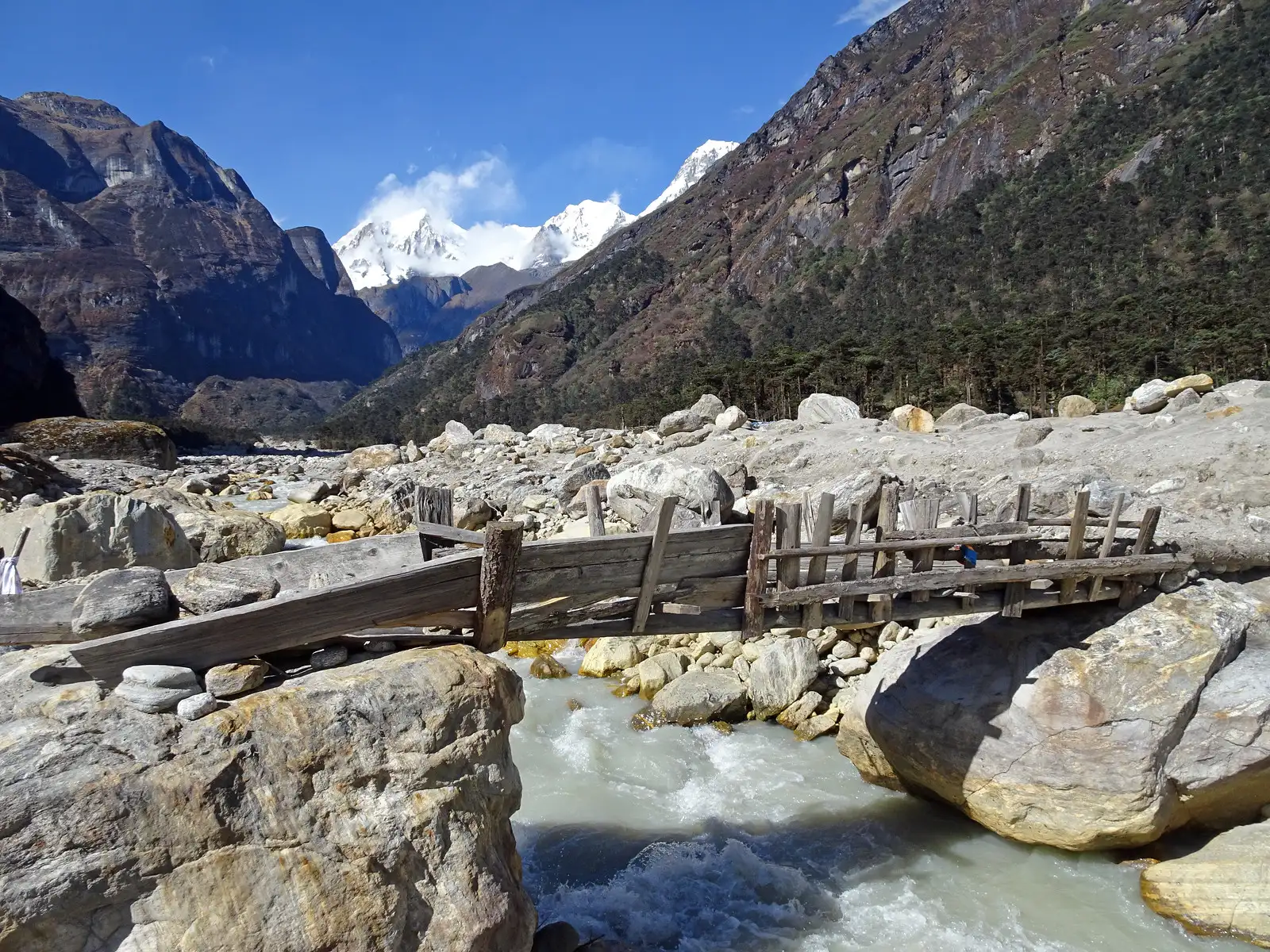
Accommodation: Tented Camp
Meals: Breakfast, Lunch, and Dinner
Trek from Yangla Kharka to Langmale Kharka (4410 m / 14468 ft) for approximately 6 hours. Witness the transition from dense forests to open valleys as you venture deeper into the Himalayas. Encounter diverse wildlife, including Himalayan birds and rare species. Take in the wild’s raw beauty by completely submerging yourself in it. Arrive at Langmale Kharka, where you can admire the surrounding peaks before resting for the night.
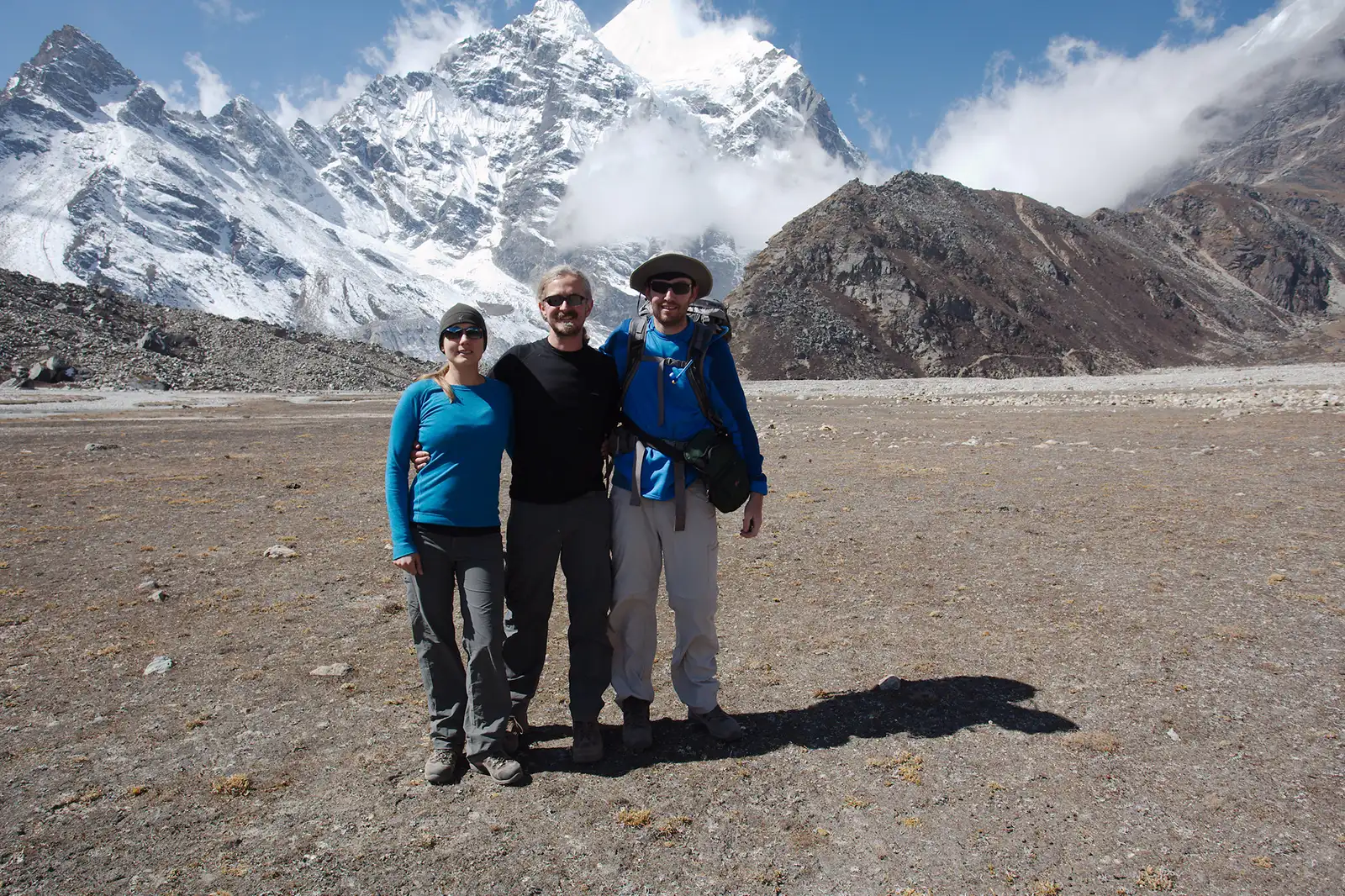
Accommodation: Tented Camp
Meals: Breakfast, Lunch, and Dinner
Embark on a 6-hour trek from Langmale Kharka to Makalu Base Camp (4870 m / 15977 ft). The trail takes you through moraines, glaciers, and awe-inspiring landscapes. Take in the breathtaking sights of Makalu, the world’s fifth-highest peak. Take in the breathtaking natural scenery of the Himalayas and celebrate your success as you reach base camp. Spend the night at Makalu Base Camp, surrounded by majestic peaks.
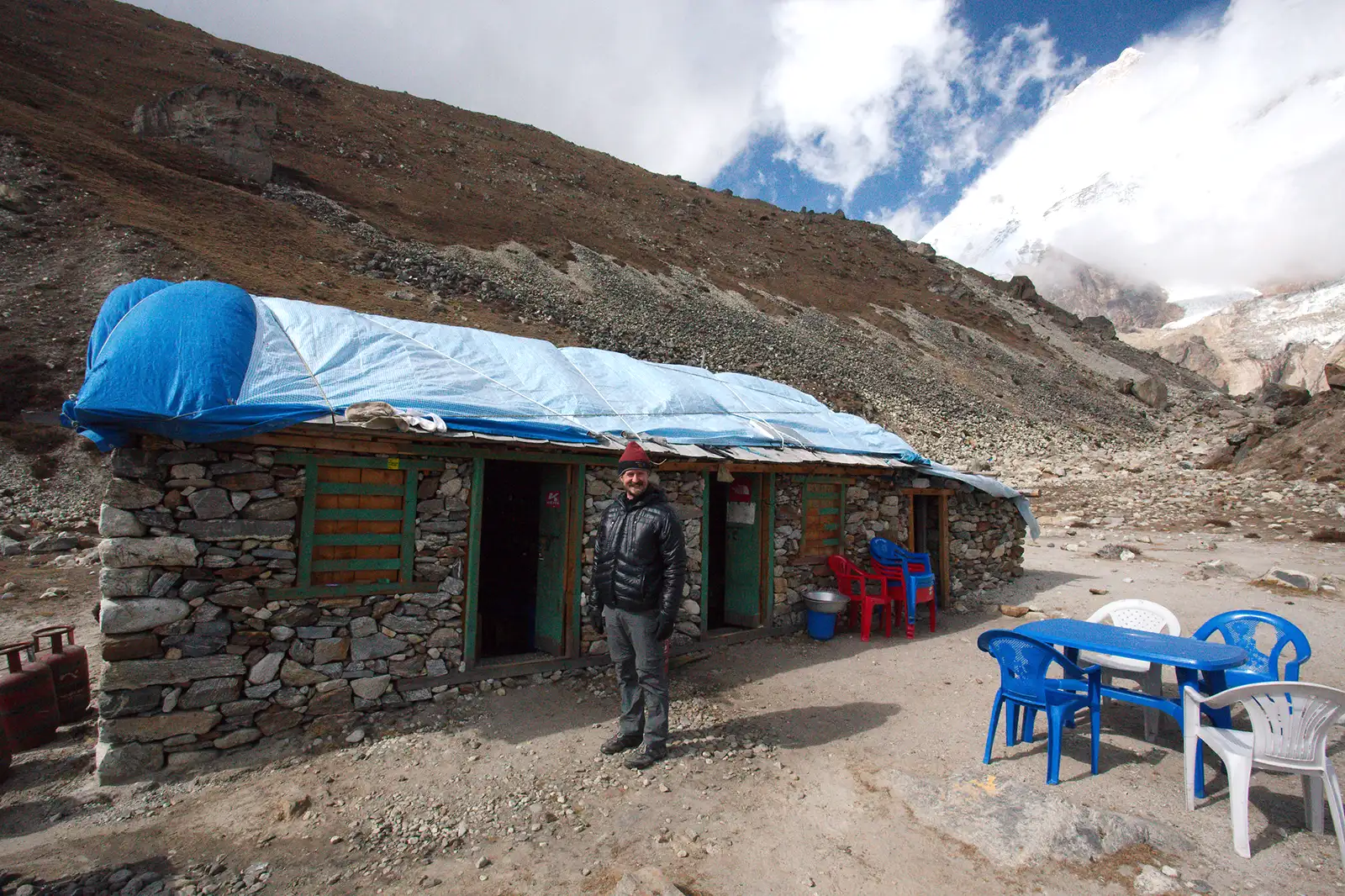
Accommodation: Tented Camp
Meals: Breakfast, Lunch, and Dinner
Proceed from Makalu Base Camp to Swiss Base Camp (5150 m / 16896 ft) in approximately 8 hours. As you traverse the rugged terrain, you’ll witness the grandeur of the surrounding peaks and the serenity of the high-altitude wilderness. The Swiss Base Camp offers spectacular views of the towering mountains and is a resting point for mountaineers. Take in the awe-inspiring vistas and enjoy a well-deserved rest.
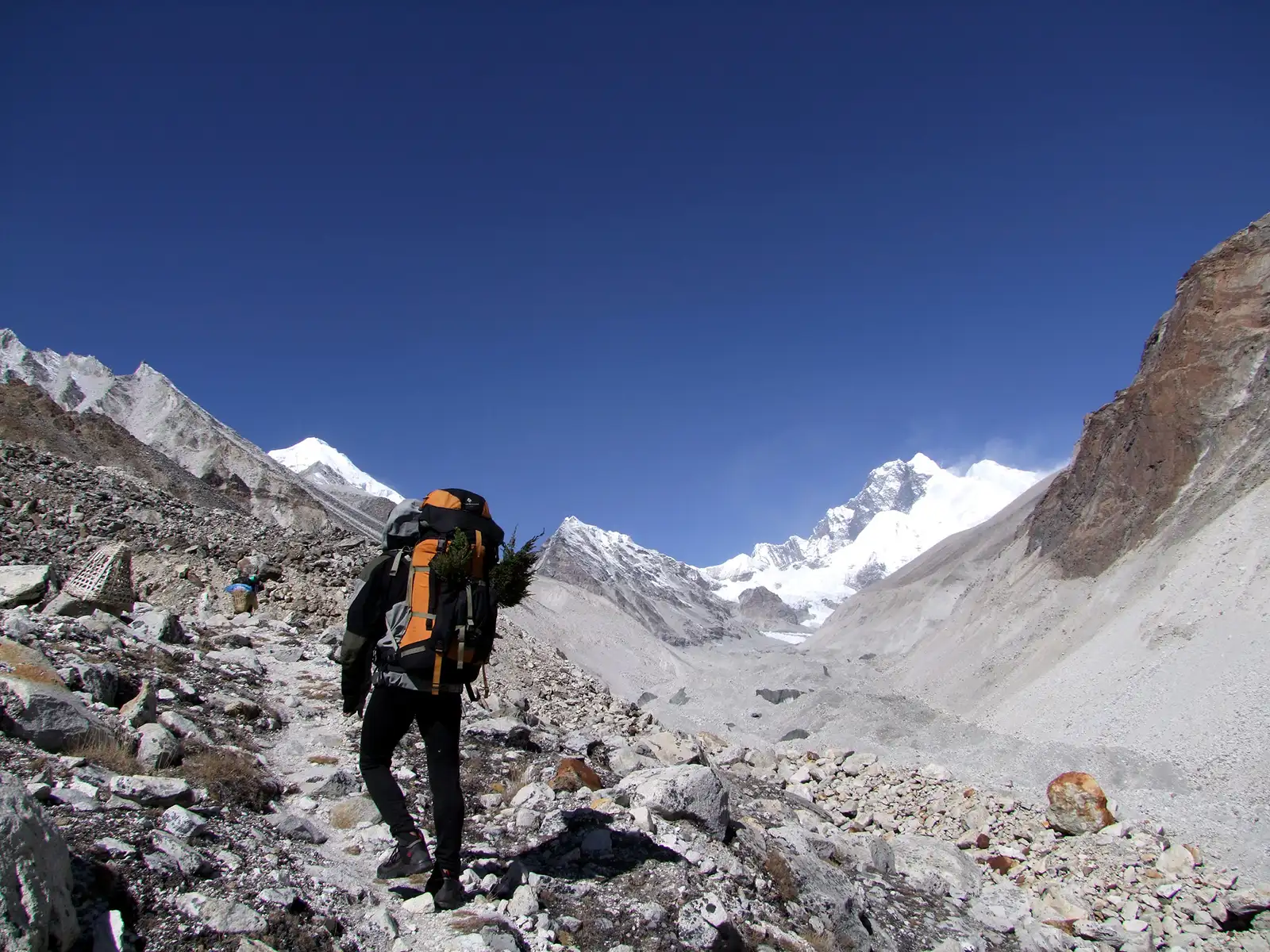
Accommodation: Tented Camp
Meals: Breakfast, Lunch, and Dinner
Take a day to acclimatize at Swiss Base Camp (5150 m / 16896 ft) and allow your body to adjust to the altitude. Utilize this opportunity to relax, explore the surroundings, and soak in the breathtaking mountain panoramas. Take in the serene scenery and rest up for the next leg of your journey.
Accommodation: Tented Camp
Meals: Breakfast, Lunch, and Dinner
Trek from Swiss Base Camp to Sherpani Col Base Camp (5688 m / 18661 ft) for approximately 5 hours. The trail gradually ascends, leading you to the base camp of Sherpani Col, a challenging mountain pass. Marvel at the rugged landscapes, towering peaks, and the sheer magnificence of the Himalayas. Arrive at Sherpani Col Base Camp and prepare for the demanding pass crossing.
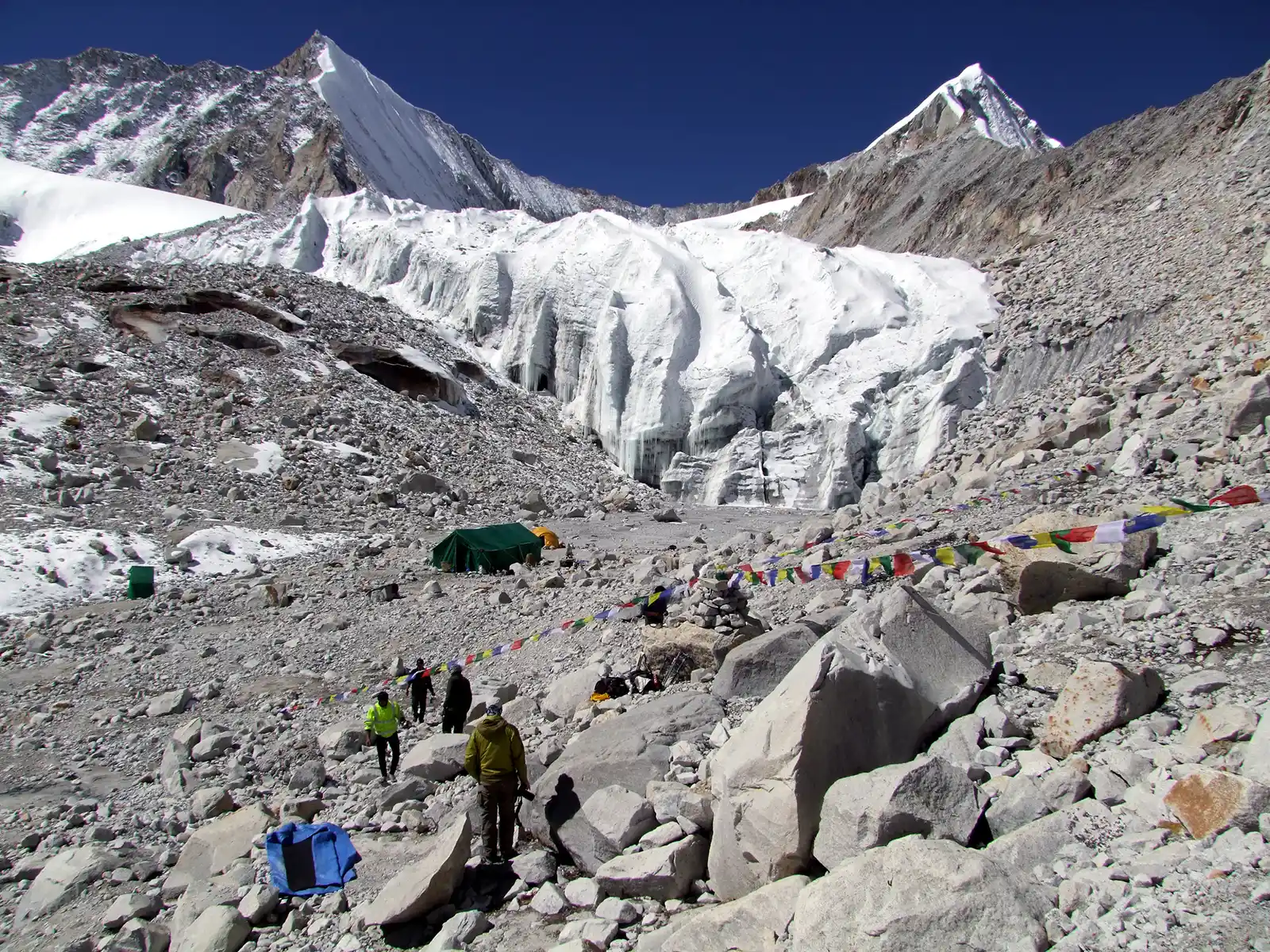
Accommodation: Tented Camp
Meals: Breakfast, Lunch, and Dinner
Embark on an 8-hour trek from Sherpani Col Base Camp to Baruntse Camp (6050 m / 19849 ft). This challenging section involves crossing the technical Sherpani Col pass. Negotiate steep ascents, navigate icy slopes, and overcome physical and mental hurdles. Once you reach Baruntse Camp, you can savor the sense of accomplishment and enjoy the panoramic mountain vistas.
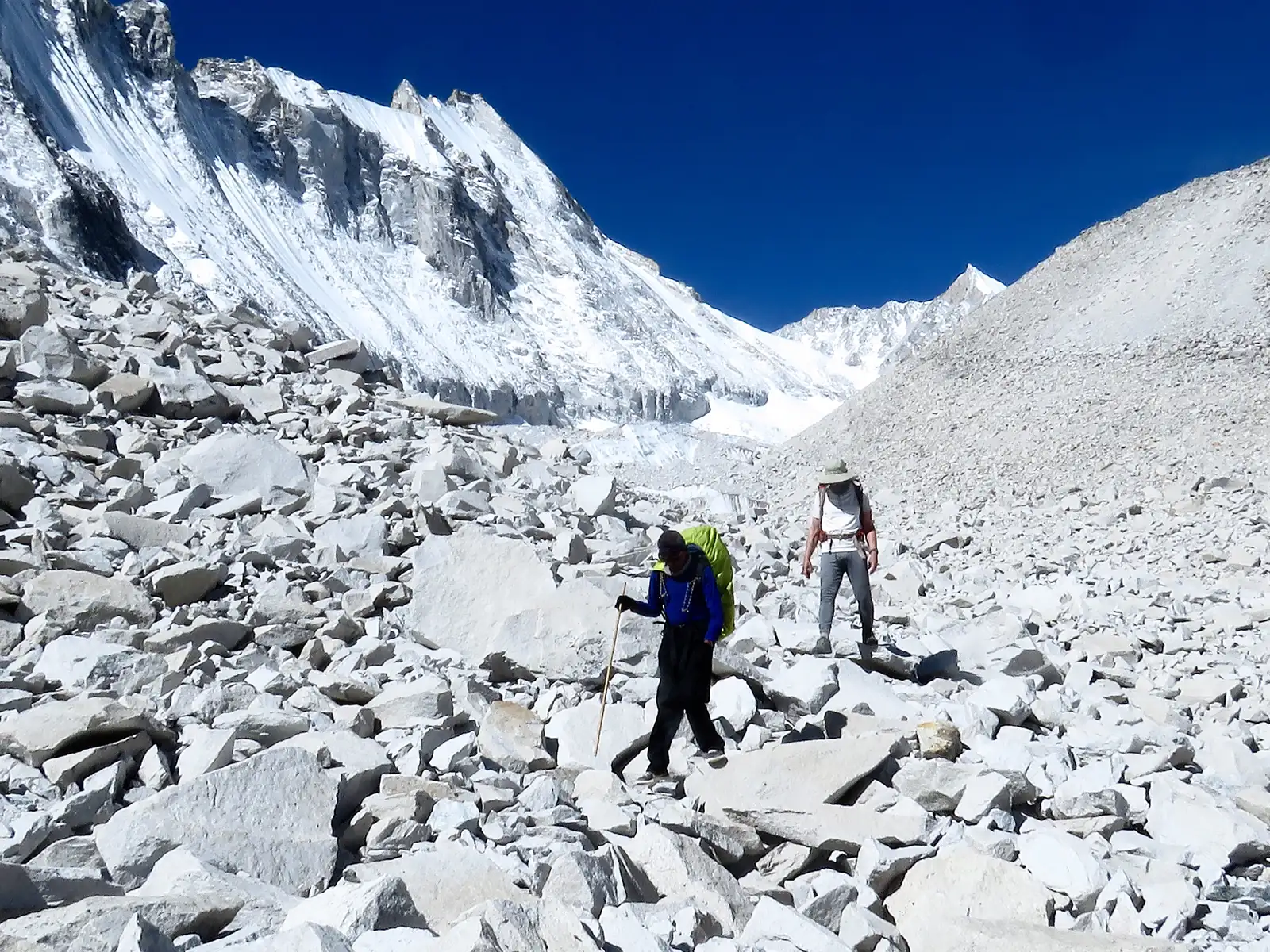
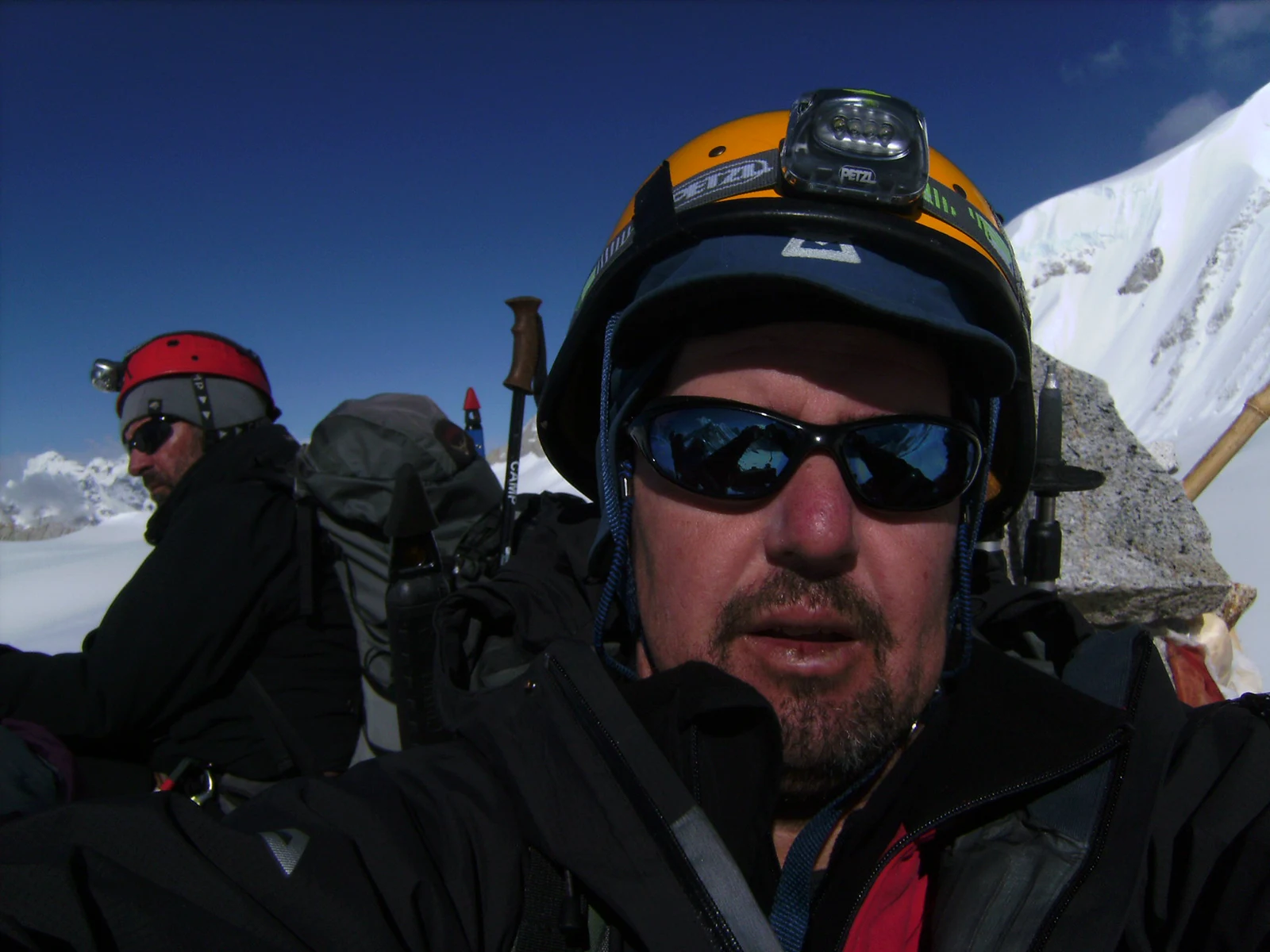
Accommodation: Tented Camp
Meals: Breakfast, Lunch, and Dinner
Trek from Baruntse Camp to Honku Basin (5500 m / 18044 ft) for approximately 7 hours. Descend from the high-altitude camp and enter the picturesque Honku Basin. Experience the contrasting landscapes, from rocky terrains to glacial moraines. Be mesmerized by the surrounding peaks and the pristine beauty of the Himalayas. Set up camp in Honku Basin and rest amidst the tranquil mountain environment.
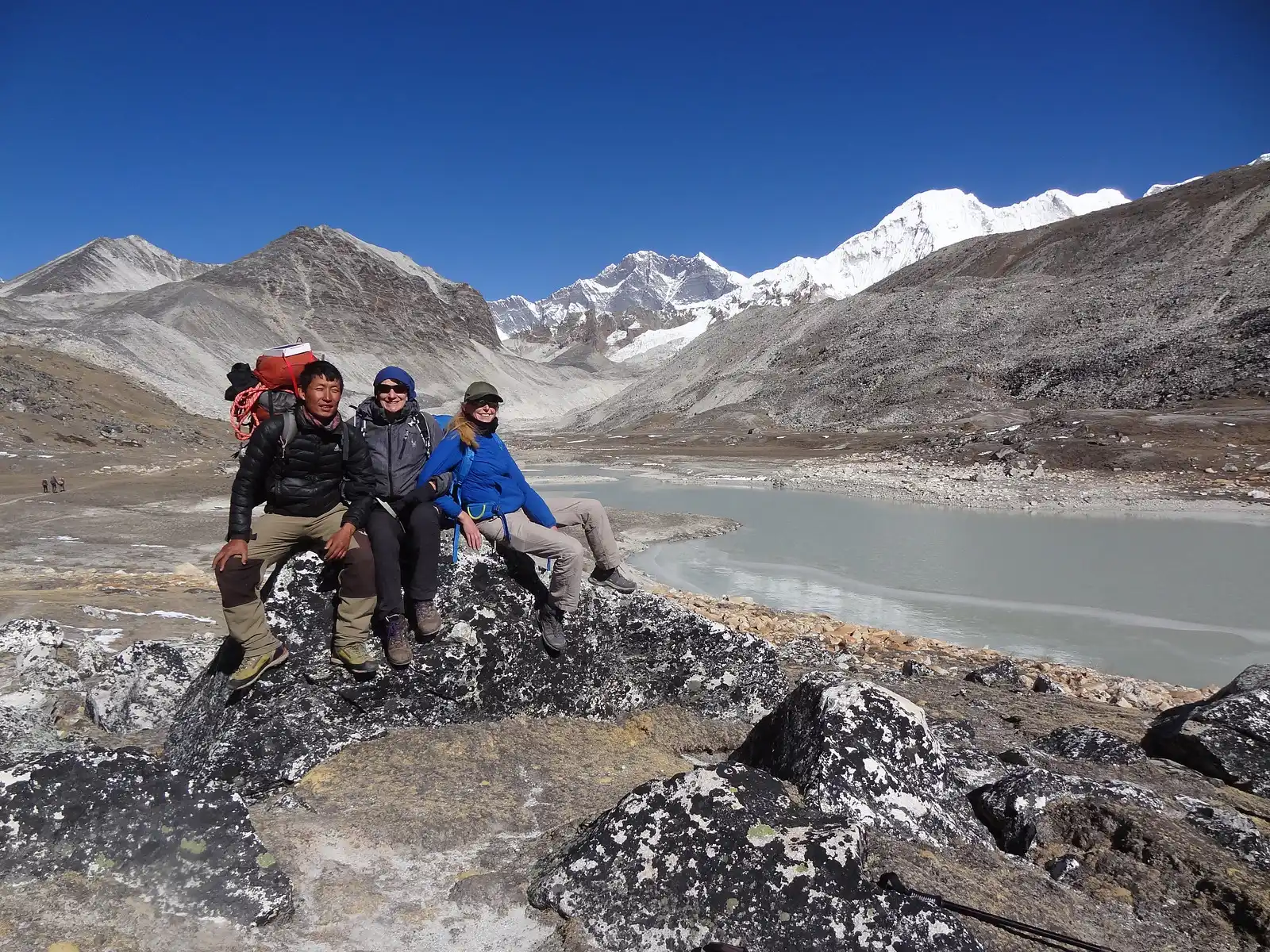
Accommodation: Tented Camp
Meals: Breakfast, Lunch, and Dinner
Proceed from Honku Basin to Amphu Lapcha Base Camp (5527 m / 18133 ft) in approximately 8 hours. Trek through a challenging terrain of boulders, ice formations, and rocky paths. Incredible panoramas of the mountains and glaciers in the area await you at the end of your trek. Arrive at Amu Lapcha Base Camp and take in the awe-inspiring sights before settling for the night.
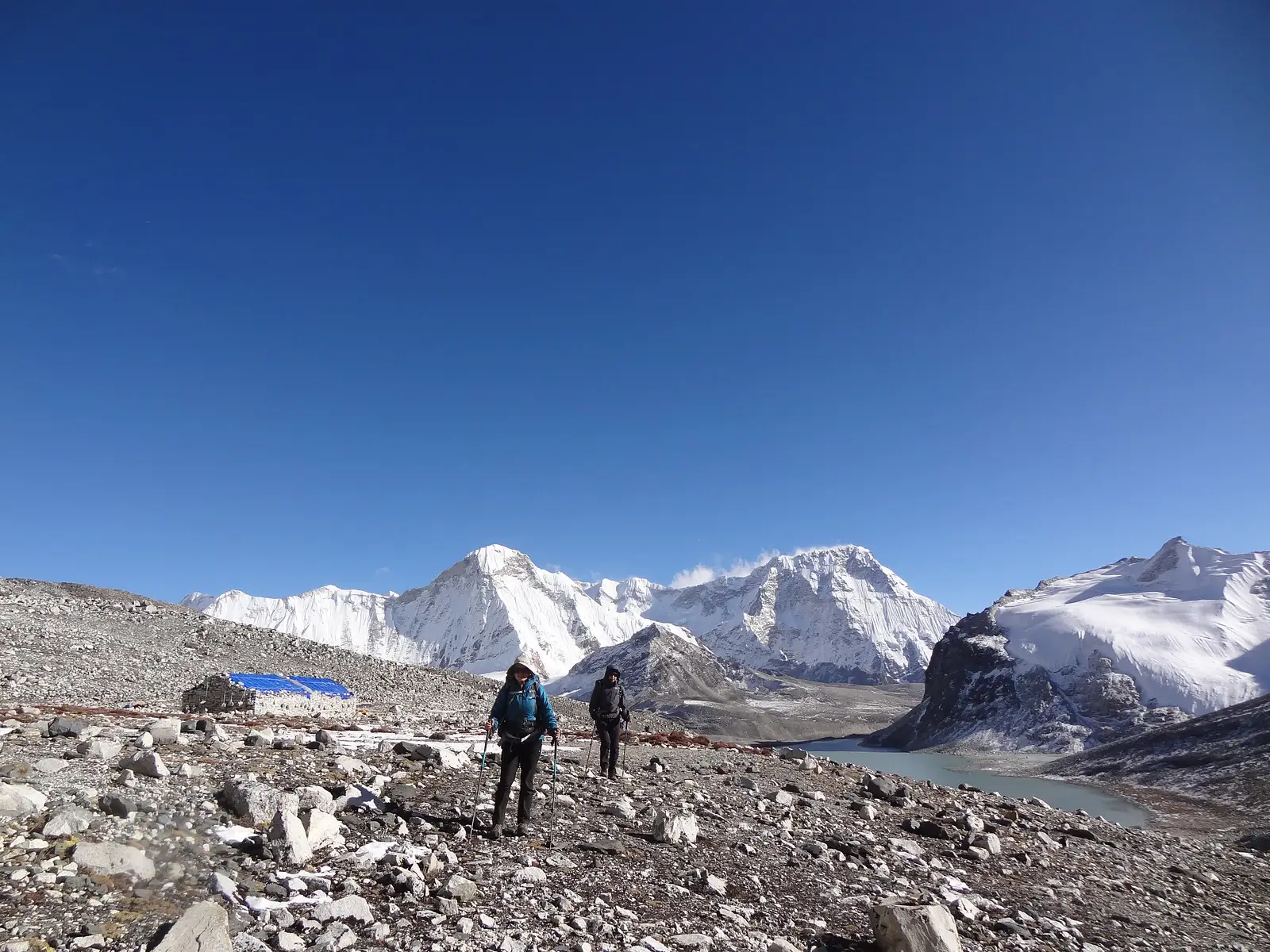
Accommodation: Tented Camp
Meals: Breakfast, Lunch, and Dinner
Take another day for acclimatization at Amu Lapcha Base Camp (5527 m / 18133 ft). Rest, relax, and allow your body to adjust to the high altitude. Utilize this time to explore the area, engage in light activities, and enjoy the serene mountain atmosphere. Prepare yourself physically and mentally for the remaining stages of the trek.
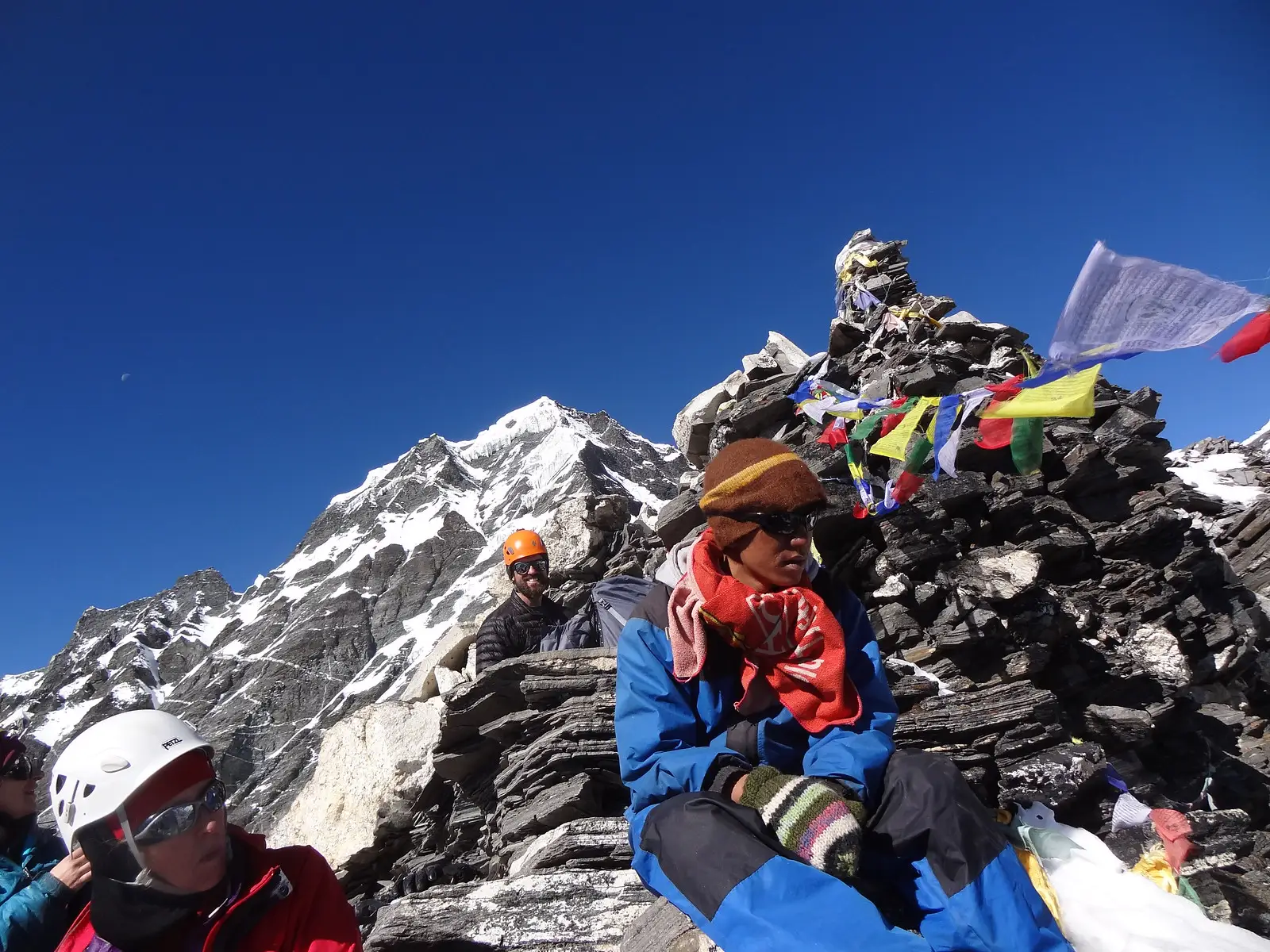
Accommodation: Tented Camp
Meals: Breakfast, Lunch, and Dinner
Trek from Amu Lapcha Base Camp to Chukung (4730 m / 15518 ft) for approximately 9 hours. Traverse across challenging terrains, icy slopes, and rocky trails. Absorb the panoramic views of peaks like Ama Dablam and Lhotse. Chukung serves as a gateway to popular trekking routes in the Everest region. Reach Chukung and relax in preparation for the next leg of the journey.
Accommodation: Tented Camp
Meals: Breakfast, Lunch, and Dinner
Continue the trek from Chukung to Tengboche (3960 m / 12992 ft) in approximately 6 hours. Descend through beautiful rhododendron forests and pass by traditional Sherpa villages. Visit the famous Tengboche Monastery, an important spiritual center in the region. Enjoy the tranquil atmosphere and stunning views of Everest, Ama Dablam, and other Himalayan peaks. Overnight stay in Tengboche.
Accommodation: Tented Camp
Meals: Breakfast, Lunch, and Dinner
Trek from Tengboche to Monjo (2700 m / 8858 ft) for approximately 6 hours. Descend through lush forests, cross suspension bridges, and relish the natural beauty surrounding you. Pass through villages like Namche Bazaar and enjoy the warm hospitality of the locals. Reach Monjo, a small village in the heart of Sagarmatha National Park, and spend the night.
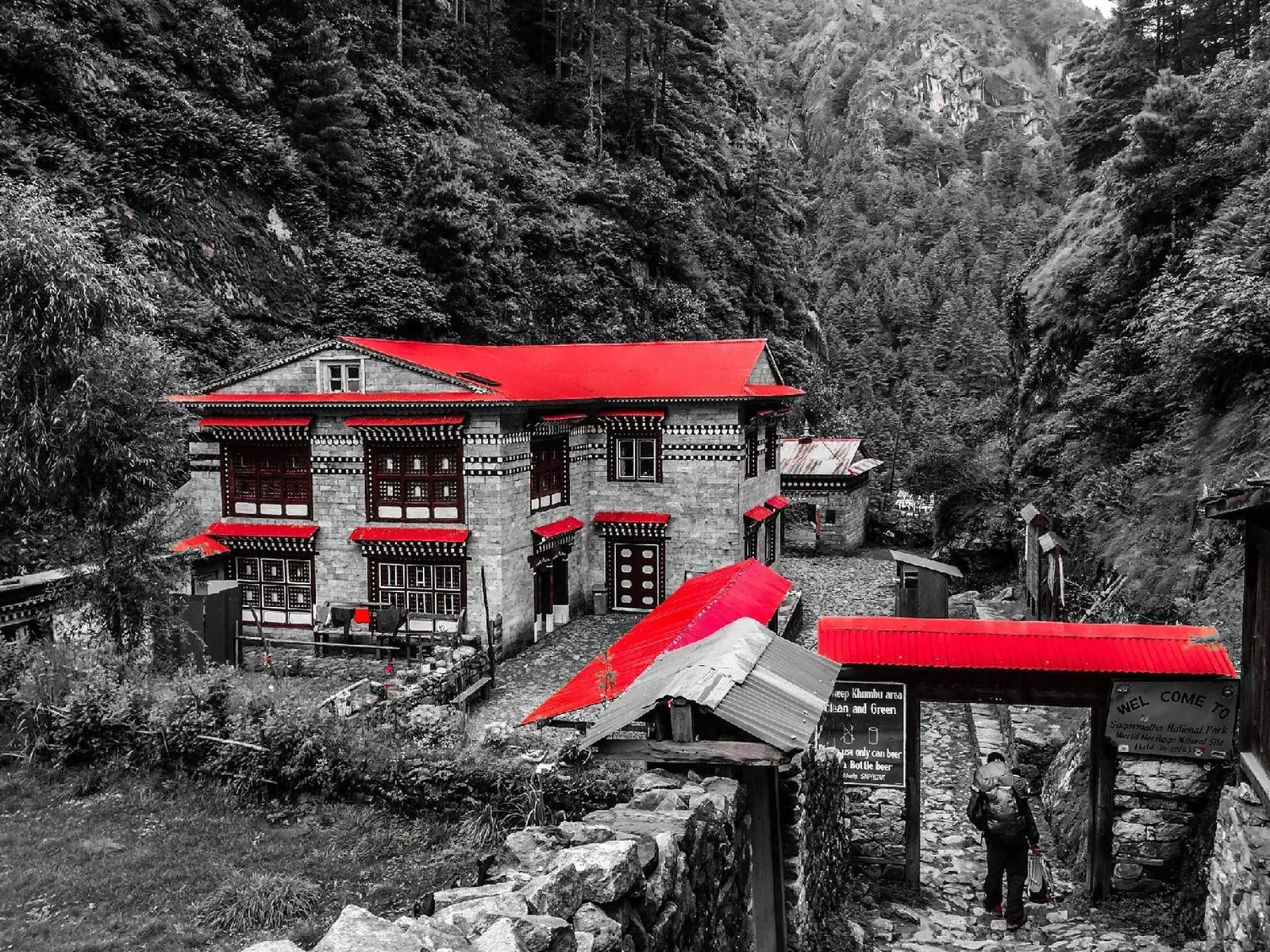
Accommodation: Eco Lodge/Teahouse
Meals: Breakfast, Lunch, and Dinner
Conclude your trek as you make your way from Monjo to Lukla (2840 m / 9317 ft) in approximately 5 hours. Go over some ground you’ve covered and say goodbye to the mountains. Once you reach Lukla, you may celebrate the end of your journey with your traveling companions.
Accommodation: Eco Lodge or Teahouse
Meals: Breakfast, Lunch, and Dinner
Fly from Lukla back to Kathmandu (1400m) in a 40-minute scenic flight. Bid farewell to the mountains and reminisce about your memorable experiences during the Sherpani Col Pass Trek. Once in Kathmandu, you can relax, explore the city’s cultural treasures, and cherish the remarkable adventure you’ve embarked upon.
Accommodation: The Everest Hotel
Meals: Breakfast
We will have another beautiful day to explore the best of Kathmandu Valley. Kathmandu, known as the city of Temples, has many beautiful UNESCO world heritage sites. Today, we explore some of these historical monuments and cultural attractions. In the morning, we visit Swoyambhunath Stupa (also called Monkey Temple), which gives you a view of the entire Kathmandu Valley.
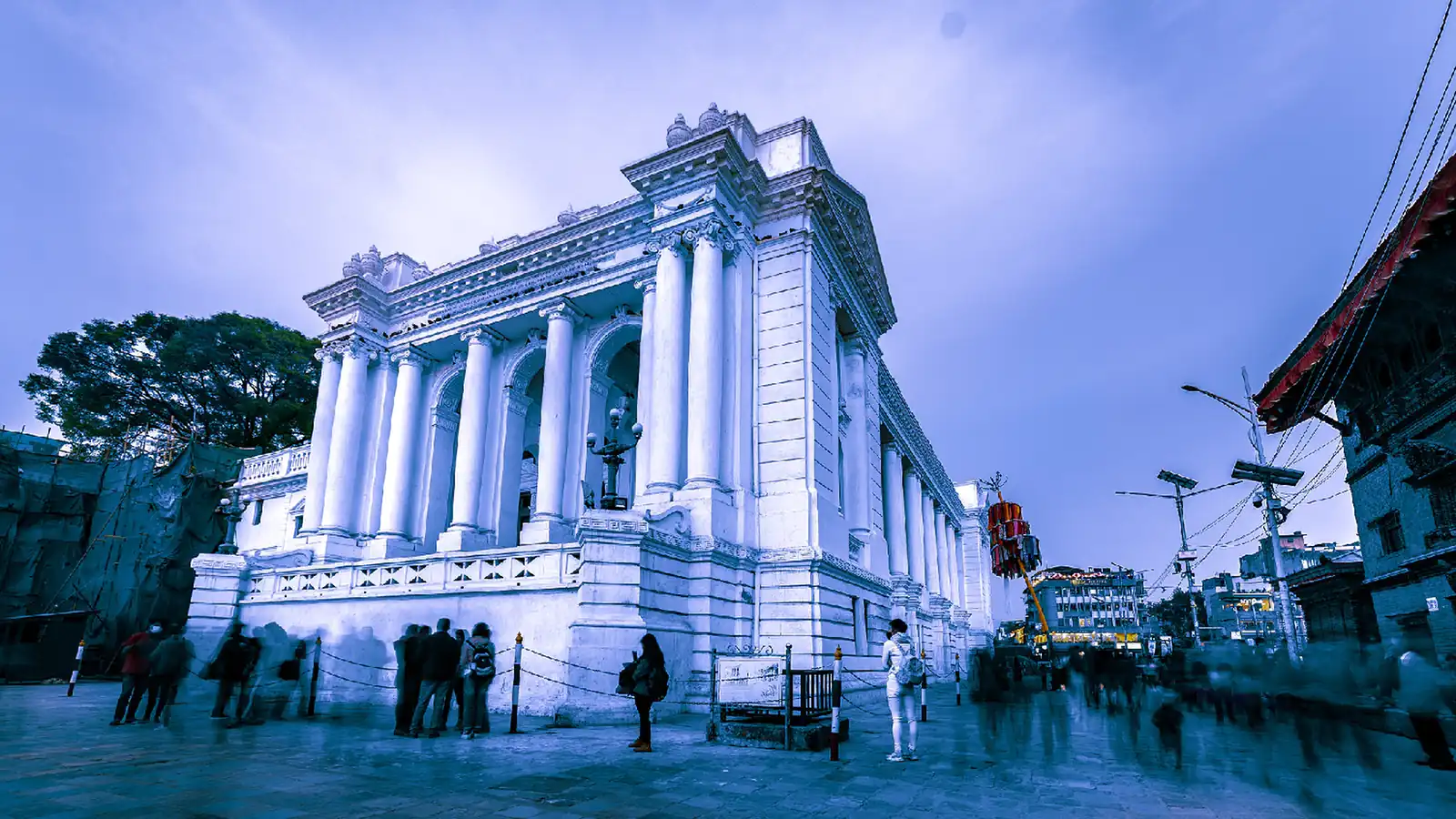
Then, we visit Kathmandu Durbar Square, once the home to Nepal’s Kings and Queens. Finally, we cap our sightseeing by getting the blessing of Lord Shiva at Pashupatinath Temple. Pashupatinath is a holy temple for the followers of the Hindu religion. It’s the biggest and most important temple in Nepal. In the evening, we shall enjoy the farewell dinner to celebrate the success of your journey.
Meals: Breakfast
Accommodation: The Everest Hotel or a similar
Sadly, this is your last day in the beautiful nation of Nepal. After a leisurely breakfast in the morning, we will drive you to the airport. Please inform us about your flight schedule so we can take you to the airport accordingly.
We will accompany you to the airport three hours before your flight to complete your customs and immigration formalities. Waving a final goodbye, you will rush to your next destination- probably your hometown taking your beautiful memories with you.
Meals: Breakfast
Customize this trip with help from our local travel specialist that matches your interests.
We accept major currencies such as the US Dollar, the Great Britain Pound, the Euro, the Australian Dollar, the Singapore Dollar, the Indian Rupee, the Swiss Franc, the Canadian Dollar, the Japanese Yen, the Chinese Yuan, the Saudi Arabian Riyal, the Qatari Riyal, the Thai Baht, the UAE Dirham, the Malaysian Ringgit, the South Korean Won, the Swedish Kroner, the Danish Kroner, the Hong Kong Dollar, the Kuwaiti Dinar, and the Bahrain Dinar.
Type C, D, and M power plugs and sockets are used. The standard voltage and frequency are 230 V and 50Hz, respectively.
Vaccinations You must be completely vaccinated against COVID-19 at least 14 days before traveling to Nepal. Vaccination documentation is required.
On Arrival Visas are available at Nepal's entrance points for travelers. Travelers from Nigeria, Ghana, Zimbabwe, Swaziland, Cameroon, Somalia, Liberia, Ethiopia, Iraq, Palestine, Afghanistan, and Syria, on the other hand, are required to obtain a visa through their nearest Nepalese diplomatic post (embassy/consulate).
To confirm the trek/tour package, we want a deposit of at least 20% of the total tour/trek fee. The remaining balance must be paid when you arrive in Nepal. We take Visa, Maestro, MasterCard, American Express, and other major credit cards. The total cost of a Bhutan and Tibet tour must be paid in full at the time of booking.
We strongly advise you to purchase a SIM card for reliable internet access throughout Nepal. Nepal Telecom (owned by the government) and NCELL (owned by the private sector) are the two main SIM card providers in Nepal. It is preferable to get a SIM card at an airport, where staff will assist with activation and data plan purchases. If you have a SIM card, it will be easier for you to contact us and locate our airport agent.
You can charge your electrical devices at hotels and lodges because there are no power outages. In the Himalayan region, however, hotel owners may levy a nominal fee.
The Sherpani Col Pass Trek is a complex and demanding hike that should only be attempted by fit, acclimatized, and experienced trekkers and mountaineers. The trek involves long hours of walking and steep ascents and descents on varied terrain, including rocky paths, moraines, and icy slopes.
The crossing of Sherpani Col Pass itself requires technical mountaineering skills and equipment such as crampons, ropes, and ice axes. To successfully traverse this portion, previous climbing expertise, and knowledge are required.
Altitude acclimatization is crucial during the trek, and proper physical fitness is necessary to endure long hours of walking in high-altitude conditions. The trek reaches elevations above 5,000 meters (16,400 feet), and trekkers should be prepared for the challenges of hiking at such heights.
Weather conditions in the region can be unpredictable and harsh, especially at higher altitudes, so trekkers must be prepared for possible adverse weather conditions, including cold temperatures, high winds, and occasional snowfall.
The Sherpani Col Pass Trek demands high physical fitness, stamina, and mental resilience. Proper preparation, physical training, acclimatization, and obtaining the necessary mountaineering skills are essential for a safe and successful trek.
The Sherpani Col Pass Trek is best done in the spring or fall, before or after the monsoon season, when the weather is mild, and the trail is dry.
1. Spring Season (March to May):
Spring is considered one of the best times for the trek, as the weather gradually becomes warmer, and the rhododendron forests come to life with vibrant blooms. The temperatures are generally moderate, ranging from mild to excellent, making it comfortable for trekking. The skies are more transparent, offering excellent mountain views. However, the trail can be slightly busier during this season.
2. Autumn Season (September to November):
Autumn is another ideal time for the Sherpani Col Pass Trek. The stable weather, with clear skies and mild temperatures, allows for breathtaking mountain views throughout the trek. Trails are less busy in the fall than in spring, and the sceneries are more beautiful because of the autumn foliage. Because of the high demand, hotels and flights in Nepal should be reserved in advance.
Remember that weather conditions in the mountains can change quickly and unexpectedly. Before setting off on the journey, verifying the weather forecast and speaking with local authorities or knowledgeable guides is wise.
The monsoon season (June to August) and winter season (December to February) are generally not recommended for the Sherpani Col Pass Trek due to heavy rainfall, increased risks of landslides, snowfall, and harsh weather conditions, which can make the trail dangerous and inaccessible.
Ultimately, the best time to undertake the trek depends on individual preferences, availability, and comfort level with weather conditions.
The minimum group size requirement for the Sherpani Col Pass Trek is typically four people. Having a minimum of four participants ensures a safer and more enjoyable trekking experience, as trekking in a group provides companionship, shared responsibilities, and support during the journey. Having at least one experienced guide or trekking professional accompanying the group is also recommended to provide guidance and assistance and ensure the participants’ safety.
Traveling with a partner or a small group can enhance the overall experience, as you can share the trek’s joys, challenges, and memories. It also allows for better coordination in terms of logistics, accommodation, and transportation arrangements.
The Sherpani Col Pass Trek presents several challenging sections, but one of the toughest parts of the trek is undoubtedly crossing the Sherpani Col Pass itself. This section requires advanced mountaineering skills, technical expertise, and physical endurance.
Crossing Sherpani Col involves navigating steep and icy slopes, encountering crevasses, and traversing challenging terrain. The ascent to the Pass requires climbing equipment such as crampons, ropes, and ice axes, as well as careful route planning and adherence to safety protocols.
The weather conditions in the Pass can be harsh and unpredictable, with the potential for strong winds, low visibility, and sudden temperature changes. Trekkers must be prepared for these challenging circumstances and have the necessary skills and equipment to navigate this demanding section safely.
Additionally, the altitude of the Pass, reaching around 5,688 meters (18,661 feet), adds to the trek’s difficulty. The effects of high altitude, including reduced oxygen levels and the risk of altitude sickness, must be taken seriously and managed with proper acclimatization and care.
Sherpani Col is a difficult pass that necessitates prior experience and planning. It is highly recommended to undertake this section with the guidance of experienced guides or mountaineering professionals who can provide the necessary support and expertise and ensure safety throughout the challenging part of the trek.
The proper trekking gear is essential for your safety, comfort, and enjoyment on the Sherpani Col Pass Trek. Here are some essential trekking gear items you should consider:
1. Trekking Boots: Sturdy, waterproof, well-fitted boots with ankle support are essential for the varied terrain and long hours of walking. Avoid pain and blisters by breaking them in beforehand.
2. Backpack: Bring a sturdy and comfortable backpack that can hold 50 to 60 liters of your clothing, personal stuff, and trekking necessities. A waist belt and padded shoulder straps are necessary for a good fit and weight distribution.
3. Clothing Layers:
– Moisture-wicking base layers: Lightweight, quick-drying tops and bottoms to keep you dry and regulate body temperature.
– Insulating layers: Fleece jackets or down jackets for warmth during colder sections of the trek.
– Weatherproof outerwear, including a high-quality raincoat and matching leggings, is essential.
4. Trekking Pants: Lightweight, dry quickly, and pleasant. Convertible pants that allow the legs to be removed are convenient when the weather suddenly changes.
5. Thermal Layers: Long-sleeve thermal tops and bottoms to provide extra warmth during cold nights and higher altitudes.
6. Headwear: A warm beanie or hat to retain heat, a sun hat or cap for sun protection, and a buff or neck gaiter for additional warmth or to shield from dust.
7. Gloves: Lightweight gloves for lower altitudes and thicker insulated gloves or mittens for higher altitudes where temperatures drop significantly.
8. Sleeping Bag: A high-quality sleeping bag rated for cold temperatures to keep you warm during chilly nights in teahouses or camping areas. Ensure it is suitable for the expected temperatures on the trek.
9. Trekking Poles: Sturdy and adjustable trekking poles provide stability and support, and reduce strain on your knees and joints during descents and challenging sections.
10. Sunglasses: UV-protected sunglasses with polarized lenses protect your eyes from strong sunlight and glare reflecting off the snow.
11. Hydration System: At least 2 liters of water for the trek, carried in a water bottle or hydration pack. You should invest in a water filtration system to guarantee clean drinking water.
12. Headlamp: A lightweight, compact headlamp with extra batteries for nighttime activities and early morning starts.
13. First Aid Kit: Your own well-stocked first aid box, including pain relievers, bandages, and blister treatment in case you need them.
14. Toiletries: Pack travel-sized toiletries, including biodegradable soap, hand sanitizer, sunscreen, lip balm, and personal hygiene items.
15. Miscellaneous: Items include trekking socks, gaiters (to keep debris out of your boots), a trekking towel, a camera, extra batteries, a power bank, trekking permits, and a waterproof cover for your backpack.
Remember to pack light while ensuring you have all the necessary gear. It is advisable to consult with us for a comprehensive gear checklist tailored to the specific requirements of the Sherpani Col Pass Trek.
We will provide an experienced and knowledgeable trekking guide with a decade-long trekking experience and successfully summited Mount Everest. Our guide will be a valuable asset throughout the Sherpani Col Pass Trek, ensuring your safety, guiding you along the trail, and sharing insightful information about the region.
In addition to the guide, we will also provide a competent and dedicated trekking crew. The crew members will include porters and support staff who are experienced and physically fit. They will assist with logistics, carry the necessary equipment and supplies, and ensure the smooth operation of the trek.
Our team is well-trained and accustomed to the challenges of the Sherpani Col Pass Trek. They know the landscape, the climate, and the precautions that must be taken for a safe trip. You may put your attention and energy into taking in the breathtaking scenery and living in the moment thanks to their knowledge and experience.
We aim to deliver a safe, enjoyable, and memorable experience during the Sherpani Col Pass Trek by providing you with a professional guide and a capable trek crew.
Upon arrival, tourists entering Nepal through Tribhuvan International Airport in Kathmandu or other authorized land entry ports will be issued a visa. You’ll need a passport valid for at least another six months and two passport-sized photos. Visa costs are different for different lengths of stay. You can also apply for a visa ahead of time at a Nepalese consulate or embassy.
To book, click the “Book Now” button and complete the necessary information. We ask for at least a 20% deposit to secure your reservation. The final payment is due upon check-in on Day 1.
Accommodation during the Sherpani Col Pass Trek consists of tents, providing a comfortable and convenient shelter amidst the mountains. However, it’s important to note that lodges are available at lower altitudes along the trek route. These lodges offer a more traditional accommodation experience, allowing trekkers to rest and rejuvenate in a cozy setting before continuing their journey.
Communication facilities along the Sherpani Col Pass Trek are available, albeit with certain limitations and intermittent connectivity. Most tea houses provide Wi-Fi access, although it may incur an additional charge. However, it’s important to note that mobile network coverage becomes patchy or unavailable as you ascend to higher altitudes.
To ensure reliable communication during the trek, it is highly recommended to carry a Satellite Phone. This device will provide a reliable means of communication in areas where regular mobile network coverage is limited or nonexistent, offering peace of mind and facilitating emergency communication if needed.
Travel insurance is highly recommended for the Sherpani Col Pass Trek. It must protect you in a medical emergency, a helicopter evacuation, a canceled trip, and the loss or theft of your goods. Ensure your insurance coverage covers high-altitude trekking and other adventure activities. You should bring a copy of your insurance policy on the trip and ensure you understand the coverage and exclusions.
Altitude sickness can affect trekkers at higher altitudes. You must inform your guide immediately if you experience headaches, dizziness, nausea, or difficulty breathing. They’ll take a look at you, diagnose your problem, and give you some advice, including descending to a lower altitude, taking rest days for acclimatization, or seeking medical attention if necessary. It is crucial to listen to your body, follow the advice of your guide, and not push yourself beyond your limits.
Based on 5 Reviews

Excellent
The Sherpani Col Pass Trek was a bloody amazing adventure, mate, but it’s important to reckon that it’s a fair dinkum challenging, and demanding trek. The difficulty level is right up there, especially when you’re crossing Sherpani Col. It calls for advanced mountaineering skills and physical fitness, no doubt. However, the views are bonza, the landscapes are pristine, and the feeling of accomplishment is worth the hard yakka. You’ve gotta make sure you’re properly prepped, mate, with physical training and acclimatization. All in all, it was a ripper experience, but make sure you’re fair dinkum ready for the tough terrain and altitude.

Excellent
Our guide for the Sherpani Col Pass Trek was outstanding. Their extensive experience and local knowledge made us feel secure and well-informed throughout the trek. They led us through the demanding sections, shared insightful information about the surroundings, and took care of our well-being. Their professionalism, leadership abilities, and friendly demeanor made the journey even more enjoyable. We highly recommend booking this trek with a knowledgeable and experienced guide like the one we had. Their expertise brought immense value to our experience.

Excellent
I would like to convey my utmost gratitude to Peregrine Treks and Expedition, the organizers of the Sherpani Col Pass Trek. Their professionalism and meticulousness were apparent from our initial contact. The pre-trek briefing was enlightening, and they promptly addressed all of our concerns and inquiries. During the trek, their support staff ensured seamless logistics and comfortable accommodations. The team’s dedication to safety and customer satisfaction was admirable. I wholeheartedly recommend Peregrine Treks and Expedition for their superb organization and execution of this demanding trek.

Excellent
Booking the Sherpani Col Pass Trek with Peregrine Treks and Expedition was seamless and hassle-free. They were incredibly responsive and attentive to our needs from the initial inquiry to the actual trek. They provided us with a detailed itinerary, outlined the necessary permits, and guided us through the booking process. The payment process was secure and convenient. Everything was well-arranged on the trek start date, from transportation to accommodation. We were thrilled with the smoothness of the entire experience. Our dream trek became a reality thanks to Peregrine Treks and Expedition.

Excellent
The Sherpani Col Pass Trek offers awe-inspiring scenes and breathtaking beauty. We were surrounded by magnificent vistas of snow-capped peaks, cascading waterfalls, and lush valleys every step of the way. The trail took us through diverse landscapes, from dense forests to high-altitude passes. The sight of Makalu, the fifth-highest mountain in the world, was an unforgettable moment. The tranquility and untouched nature of the region left us in awe. Each day, we were treated to mesmerizing sunrises and sunsets that painted the sky with vibrant colors. The Sherpani Col Pass Trek is a true feast for the senses.
The best experience we had with Peregrine was the whole tour of the Annapurna Base Camp Trek was tailor-made for our requirements; all our requests were reviewed, discussed, and accepted and, in some instances, with a better recommendation.
More Reviews